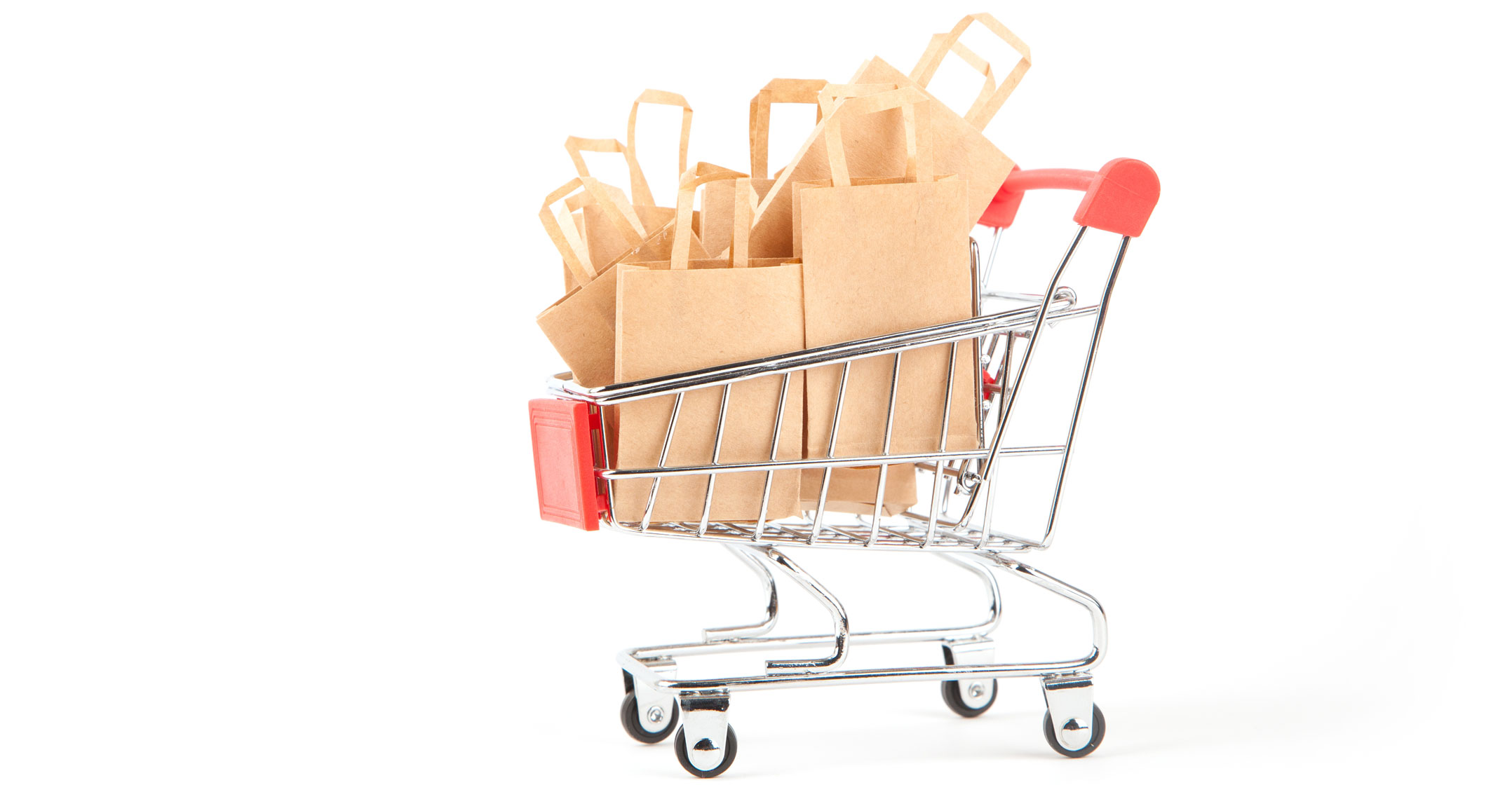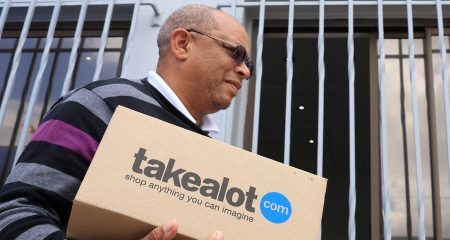 Shopping online – from your couch, while eating pizza – works very well. It is a much easier way to compare prices than by driving from shop to shop. You have more information at your fingertips than the usually inexperienced and uninterested salesman can share, if any of them care enough to look up from their cellphone to do their job.
Shopping online – from your couch, while eating pizza – works very well. It is a much easier way to compare prices than by driving from shop to shop. You have more information at your fingertips than the usually inexperienced and uninterested salesman can share, if any of them care enough to look up from their cellphone to do their job.
Even so, difficult-to-navigate sites and glitches see many shoppers “walk out the door” without buying anything.
“E-commerce could increase 100% to reach 5.6% of the total retail pie if glitches are fixed,” according to the latest SA Digital Customer Experience Report, the third annual survey of customers’ perceptions and experiences of online shopping.
Collectively, glitches in online merchants’ trustworthiness, ease-of-use, security, delivery and after-sales support are estimated to cost e-retailers nearly R12-billion in lost sales, the survey by the online polling community Ovatoyou and digital marketing agency Rogerwilco found.
In addition, Ovatoyou calculated that frequent cart abandonment – when shoppers do not complete their transactions – amounts to more than R20-billion. “Over R30-billion is being left on the table, which is coincidentally the current market value of e-commerce in South Africa,” says Ovatoyou’s Amanda Reekie.
If only
Thus, consumer e-commerce could easily double if things just worked as they should. “A staggering 96% of respondents said they would spend more online if e-retailers’ customer experience was better,” says Reekie.
Reekie explains that the researchers based their calculation of R30-billion in lost sales on two publicly available sources of information: the current value of e-commerce in South Africa as estimated by World Wide Worx and the number of online shoppers in South Africa estimated by We Are Social.
According to World Wide Worx, e-retailers have annual sales of R30-billion. Other sources put it higher. For instance, a recent study by Deloitte Africa estimated that online sales had already exceeded R40-billion in 2019 and has been growing at 13%/year since.
 We Are Social computed that some 21.9 million South Africans have bought products online, with the number in line with that calculated by Deloitte’s study. Deloitte estimated that the number of online shoppers in South Africa will grow to 32 million by 2024.
We Are Social computed that some 21.9 million South Africans have bought products online, with the number in line with that calculated by Deloitte’s study. Deloitte estimated that the number of online shoppers in South Africa will grow to 32 million by 2024.
Based on these figures, Ovatyou calculated an estimated annual spend of R1 368/capita. “We then reviewed the median amount by which our respondents would increase their online spend if the experience was better,” says Reekie.
The survey found:
- 5% of respondents would spend less than 10% more;
- 26% would spend 10% to 25% more;
- 30% would spend 25% to 50% more;
- 23% would spend 50% to 75% more;
- and 11% would increase spending by over 75%.
“In each instance, we selected the median figure in the range – for those suggesting they’d spend between 10% and 25% more we based our calculation on 17.5%. The net impact of poor online experiences can thus be calculated as R11.95-billion,” according to Reekie.
The value of incomplete transactions is even higher, at more than R20-billion. A massive 76% of respondents say that they do not make it to the checkout, but abandon their “cart” before completing their purchases.
“More than three quarters of the 2 000 respondents in the study indicated that they abandon purchases,” says Reekie, adding that some of them abandon purchases often and others less.
The study specifically asked respondents to indicate how often they do not complete purchases, and why. It used the data to calculate the weighted average of lost sales with the result that sales would be R20-billion higher if shoppers actually got to the checkout.
Over half of the respondents in the study indicated that high shipping fees were to blame, with 32% noting lengthy delivery times as a deterrent.
A third of the online shoppers complained that there are too many steps in the purchase process, as well as listing slow websites and a lack of support reasons for cart abandonment.
Payment problems
Payment issues – either a complete failure in the processing of the transaction (cited by 26%) or an issue with a discount code (20%) – continue to be significant impediments to completing a purchase.
Analysing which part of the experience deterred consumers from increasing their spend highlighted three key issues: delivery, credibility and the overall experience.
“The opportunity cost is pretty clear; consumers expect a higher level of experience from brands that they buy online from. This could in part be because they have become used to the experience when dealing with an Amazon or Takealot,” says Charlie Stewart, CEO of Rogerwilco.
 “These brands have set a high bar and local e-retailers need to up their online game if they are to convert the huge appetite among consumers for online shopping into rands and cents.”
“These brands have set a high bar and local e-retailers need to up their online game if they are to convert the huge appetite among consumers for online shopping into rands and cents.”
Online shopping has seen a sharp increase since the start of the pandemic and is one of the few sectors to grow. The user base is wide, with the report revealing that a full 82% of respondents have made at least one online purchase. More than 70% of those reported a household income of less than R10 000/month.
This entrance of a whole new cohort of shoppers, coupled with an increase in the number of categories people are buying from, takes online shopping out of the narrow niche that it was, says Reekie.
Significantly, 32% said they have increased the number of online stores they buy from, 31% have made online shopping a part of their shopping routine, and 20% report shopping more through social media.
“With improved levels of connectivity and an abundance of online shopping options, there’s no good reason why South Africa should lag behind other markets such as the US and UK. Customer experience is well and truly holding it back,” says customer experience expert and commissioning partner Julia Ahlfeldt.
Why?
She believes that given how expensive it is to get feet through the door, or rather eyes on the page, cart abandonment must come under the spotlight. “Retailers need to examine the functional and emotional reasons why shoppers are not completing their transactions,” she says.
When sales are made, e-retailers need to complete the rest of the online experience offline, and it is here where some of the key aspects of the transaction come together.
This is the point where the investment the customer has made – be it time, energy or money – comes to fruition, according to Ovatoyou. A third of respondents spoke of the delivery of their purchase in defining their experience and perception of the brand.
 As important as the delivery of the purchase is, it was surpassed by the 34% of respondents who said unpacking their new purchase was the most memorable aspect of their online shopping experience.
As important as the delivery of the purchase is, it was surpassed by the 34% of respondents who said unpacking their new purchase was the most memorable aspect of their online shopping experience.
As a case in point, in recent years unboxing has become one of the most popular video categories on YouTube. “Unboxing is a huge missed opportunity for brands,” says Ahlfeldt. “Items haphazardly thrown into a delivery box doesn’t say ‘we appreciate our customers’.”
The research points to three factors that build trust with shoppers.
The first is the experience itself. Large stores like Amazon and Takealot have got this part of journey right, according to Rogerwilco. Stewart says that good customer experience minimises frustration, reduces second-guessing and stops customers switching across to a rival site.
“Retailers need to recognise that consumers are becoming more loyal to the experience than they are to the brand,” says Stewart.
The second factor is brand resonance, with 32% of respondents claiming they buy at familiar category and branded stores. Nike, Samsung and Apple were just a few of the names mentioned, as were Clicks and Superbalist.
While peer reviews go a long way in establishing trust, customers are also more likely to purchase from a brand they’ve seen advertised. This insight must not be lost on new entrants who must factor the cost of marketing and brand building in when preparing budgets for their online stores, says Stewart.
Security
The third factor of trust is security. Around 12% of respondents said they wanted online stores to make a clear commitment to keeping their personal information private and secure, while 11% expressed the need for a safe environment in which they could transact.
When it comes to making the all-important purchase, a noteworthy 55% of shoppers based their decisions on social media posts with 54% looking at reviews on the brand’s website. Third-party review sites were used by a further 35% of the respondents in the study.
Importantly, negative commentary would stop 64% of shoppers in their tracks and result in a lost sale.
Recommendations from family and friends are just as important as reviews, with 54% of those polled indicating that they follow recommendations, followed closely by promotional information and brand advertising.
Around 21% of online shoppers were persuaded by so-called influencers.
Should the purchase experience be positive, a full 78% of respondents said they would share it with their friends and family (who are then responsible for 54% of purchase decisions).
Great service
Nearly 60% of shoppers would post about great service on social media or online review sites. A similar number indicated they would buy more from brands that please them. Conversely, a bad experience is also shared: 52% would tell family and friends and 45% would post on social media.
Noteworthy is that more than half the respondents indicated that they would never use the offending site or brand again. “We can truly say that customer experience is brand experience,” says Ahlfeldt.
Stewart reiterates the importance of online shopping. “South Africa is online. Whether people are shopping for groceries, buying wigs or making investment decisions, over the past 18 months we have witnessed a sharp increase in consumers’ desire to engage with brands via their phones, televisions, watches, laptops and computers.”
This article was originally published by Moneyweb and is used here with permission




